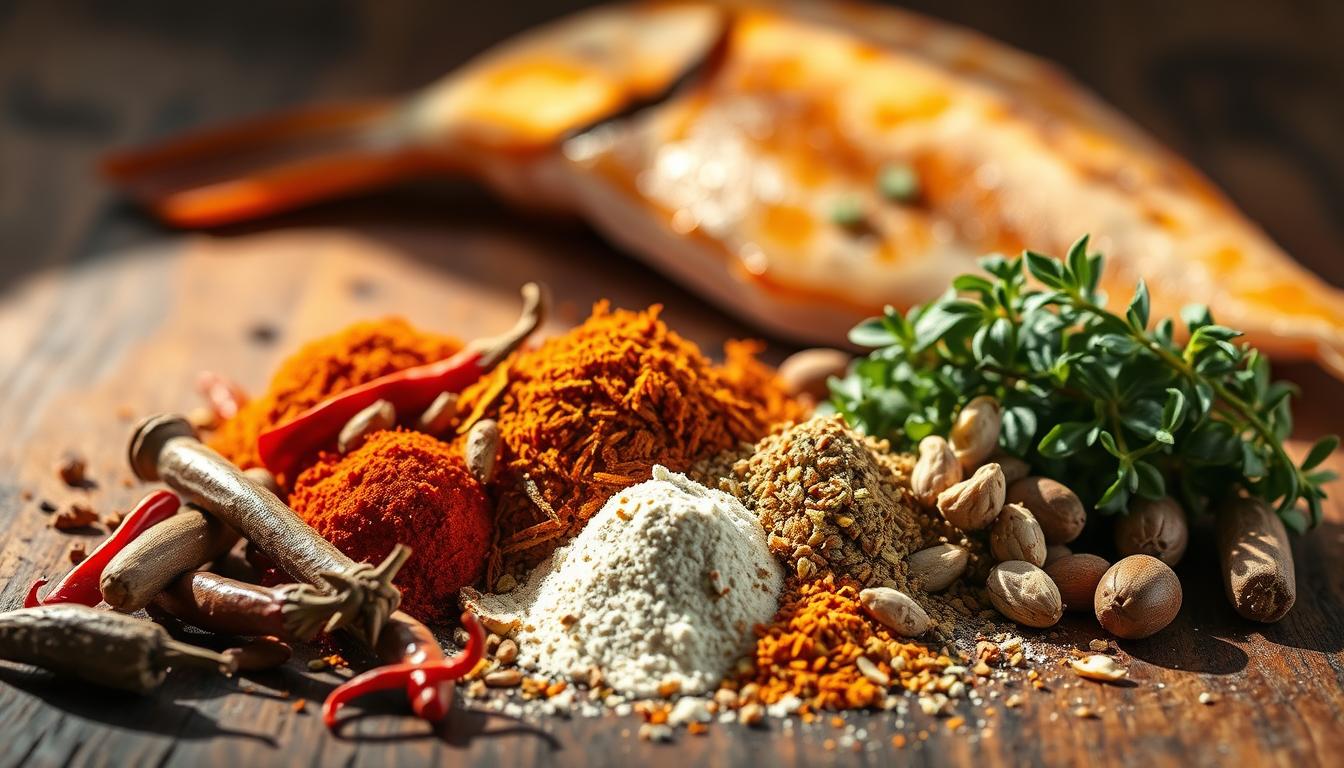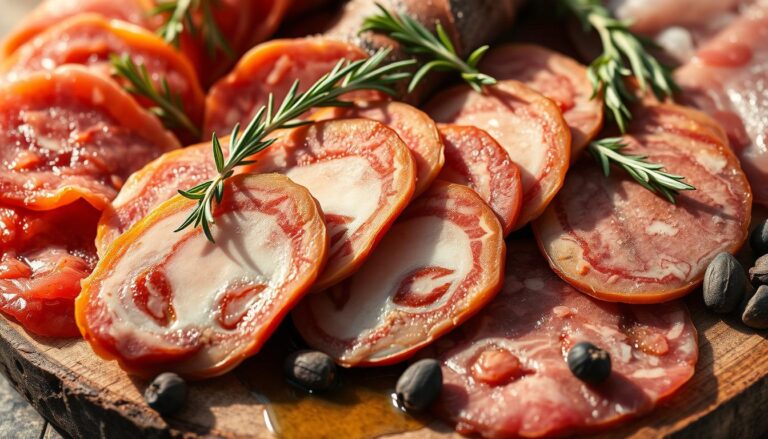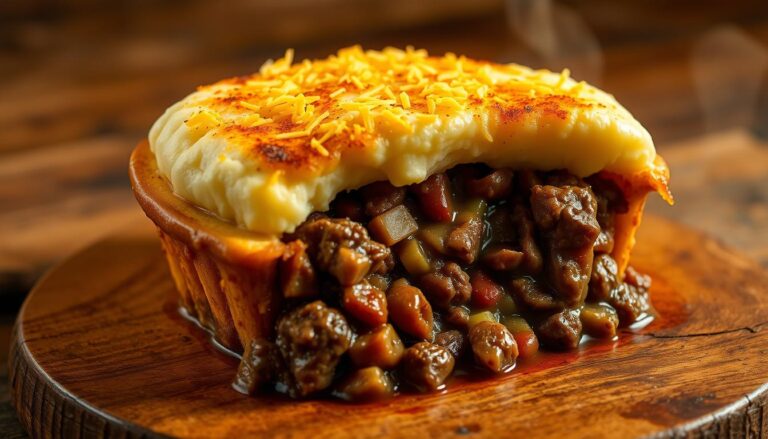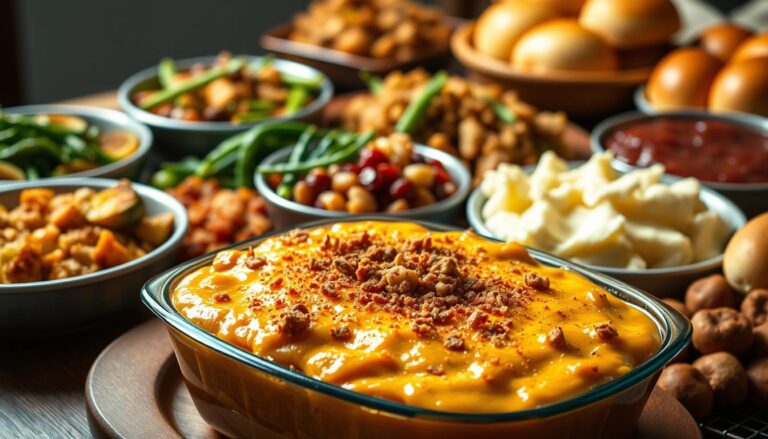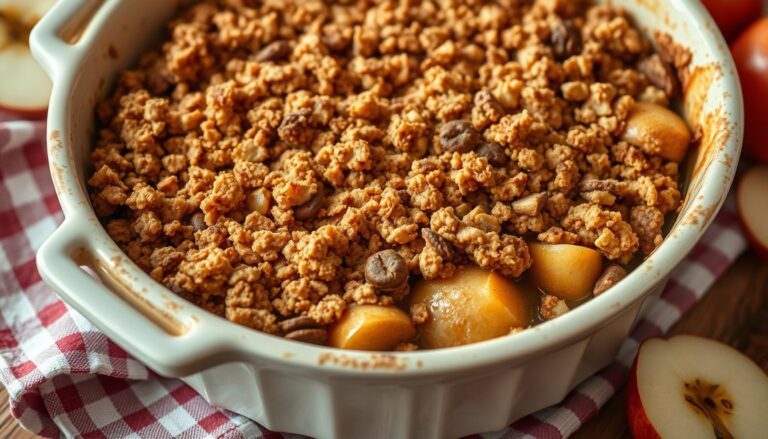Blackened Seasoning: The Ultimate Spice Blend
Elevate your dishes with the rich flavors of blackened seasoning. This versatile spice blend is a favorite in many kitchens.
This ultimate spice blend is more than just spices. It unlocks deep flavors in foods, from meats to veggies.
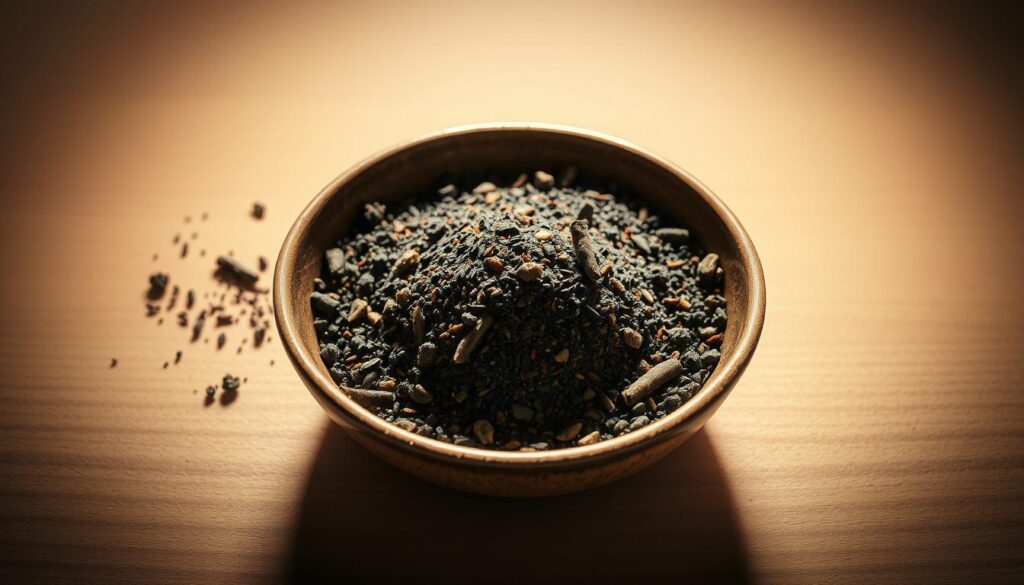
Learning about blackening seasoning can improve your cooking. It opens the door to new recipes.
This article will take you on a journey through blackened seasoning. You’ll learn about its recipe, uses, and benefits.
Key Takeaways
- Understanding the components of blackened seasoning.
- Learning how to use blackened seasoning in various dishes.
- Exploring the benefits of using this ultimate spice blend.
- Discovering simple recipes to get started.
- Tips for customizing your blackened seasoning mix.
What is Blackened Seasoning?
Blackened seasoning is a mix of spices that’s key in Cajun and Creole cooking. It’s used to flavor foods like fish, chicken, and steak.
Definition and Culinary Purpose
Blackened seasoning is a dry rub made from spices, herbs, and sometimes paprika, garlic powder, and onion powder. It’s meant to add bold flavor to foods, best when cooked at high heat. This seasoning creates a crust that boosts taste and texture.
Using blackened seasoning makes cooking easier. It’s a single mix for many dishes, from meats to veggies. You can tweak it to fit your taste by changing its ingredients.
The Distinctive Flavor Profile
The flavor of blackened seasoning is bold, spicy, and smoky. It includes paprika, cayenne pepper, and thyme for its unique taste. When cooked at high heat, it forms a flavorful crust that’s both aromatic and savory.
| Key Ingredient | Flavor Contribution |
|---|---|
| Paprika | Smoky, slightly sweet |
| Cayenne Pepper | Spicy, pungent |
| Thyme | Herbal, slightly minty |
The History of Blackened Seasoning
The story of blackened seasoning starts in Louisiana, at the heart of Cajun cuisine.
Cajun cooks created this spice blend to add flavor to their dishes. It shows their resourcefulness.
Cajun Cooking Roots
Cajun cooking began in the 18th century. French-speaking Acadians were sent to Louisiana. They mixed their cooking traditions with local ingredients, creating a unique taste.
Spices and herbs were key in Cajun cooking. They helped hide the taste of bad meat. This led to the bold flavors of blackened seasoning.
- Early Cajun cooking used paprika, garlic, and onion powder.
- They seasoned meats like fish and chicken with this blend.
Chef Paul Prudhomme’s Contribution
Chef Paul Prudhomme made blackened seasoning famous in the 1980s. He was a well-known chef and restaurateur.
Prudhomme used the spice blend on fish and chicken. This made blackened seasoning a key part of American cuisine.
Prudhomme’s skill and creativity helped blackened seasoning become popular. He mixed traditional Cajun methods with modern tastes.
Essential Ingredients in Blackened Seasoning
To truly appreciate blackened seasoning, one must first understand its foundational ingredients. The blend is a complex mix of spices, herbs, and other components that come together to create its distinctive flavor.
Base Spices
The base spices in blackened seasoning provide the core flavor profile. These include a variety of peppers and spices that give the seasoning its characteristic taste.
Paprika, Cayenne, and Pepper Varieties
Paprika adds a rich, earthy flavor, while cayenne pepper contributes a spicy kick. Other pepper varieties, such as black pepper, enhance the overall depth of the seasoning. Paprika is also known for its antioxidant properties and its ability to add color to dishes.
Herbs and Aromatics
Herbs like thyme and oregano, along with aromatics such as garlic, play a key role in the flavor profile of blackened seasoning. These ingredients add complexity and depth, making the seasoning more than just a simple spice blend.
Flavor Enhancers
Flavor enhancers are critical in blackened seasoning, as they amplify the overall taste experience. These enhancers include salt and garlic components, among others.
Salt and Garlic Components
Salt is a fundamental component that enhances the flavors of other ingredients. Garlic, whether in powder or fresh form, adds a pungency that is characteristic of blackened dishes. The combination of salt and garlic is effective at bringing out the natural flavors of the ingredients it’s used with.
Optional Additions
Some recipes for blackened seasoning include optional additions such as onion powder or dried herbs. These ingredients can be adjusted based on personal preference, allowing for a customized flavor profile.
| Ingredient | Function |
|---|---|
| Paprika | Adds earthy flavor and color |
| Cayenne Pepper | Contributes heat |
| Garlic | Adds pungency and depth |
| Salt | Enhances overall flavor |
As
“The art of seasoning is not just about adding flavor, but about creating a balance that enhances the natural taste of the ingredients.”
Understanding the role of each ingredient in blackened seasoning is key to mastering its use in cooking.
How to Make Blackened Seasoning at Home
Making your own blackened seasoning at home is easy and fun. It lets you adjust the flavors to your liking. This spice mix is key in Cajun and Creole cooking.
Traditional Recipe Proportions
The classic blackened seasoning recipe has a special spice mix. It includes paprika, garlic powder, onion powder, thyme, oregano, cayenne pepper, black pepper, and salt. Start with equal parts of paprika, garlic powder, and onion powder. Use less of the other spices.
A basic recipe might include: 2 tablespoons paprika, 1 tablespoon garlic powder, 1 tablespoon onion powder, 1 teaspoon thyme, 1 teaspoon oregano, 1/2 teaspoon cayenne pepper, 1/2 teaspoon black pepper, and 1/2 teaspoon salt.
Mixing and Storage Techniques
Mixing the spices is simple. Just put them in a bowl and stir until they’re well mixed. Make sure the spices are evenly spread for a consistent taste.
Proper Containers
Use airtight glass jars to store your seasoning. Labeling the jars helps you know what’s inside and when it was made.
Shelf Life Considerations
How long your seasoning lasts depends on storage. Keep it in a cool, dry spot away from sunlight. Homemade spice blends can last 6 months to a year. Check them often for any signs of spoilage.
“The art of cooking is not just about following a recipe, it’s about understanding the flavors and techniques that make a dish come alive.”
By making your own blackened seasoning, you can control the ingredients. You can also try different spice ratios to find your perfect flavor.
Blackened Seasoning Variations
Blackened seasoning comes in many forms, each with its own twist. You can find regional flavors and personal heat levels. This makes it loved by many.
Regional Differences
Every region has its own take on blackened seasoning. For example, Cajun blackened seasoning from Louisiana is known for its bold taste. Other places might make their blends differently to fit local tastes.
Looking at different blackened seasonings shows how varied they can be:
| Region | Key Ingredients | Flavor Profile |
|---|---|---|
| Louisiana (Cajun) | Paprika, garlic powder, onion powder, cayenne pepper | Bold, spicy, smoky |
| Texas | Chili powder, cumin, garlic powder, chipotle peppers | Smoky, slightly sweet, spicy |
| Memphis | Paprika, brown sugar, garlic powder, black pepper | Sweet, smoky, savory |
Heat Level Adjustments
Changing the heat level is a common way to customize blackened seasoning. You can tweak the amount of cayenne pepper or other spicy ingredients.
If you like it milder, just cut down on the hot peppers. For a spicier taste, add more hot spices or other fiery elements.
Blackened Fish Seasoning
Blackened fish seasoning is a special mix made to boost the taste and texture of fish cooked by blackening. It’s key for getting that perfect crust on the fish without hiding its natural flavor.
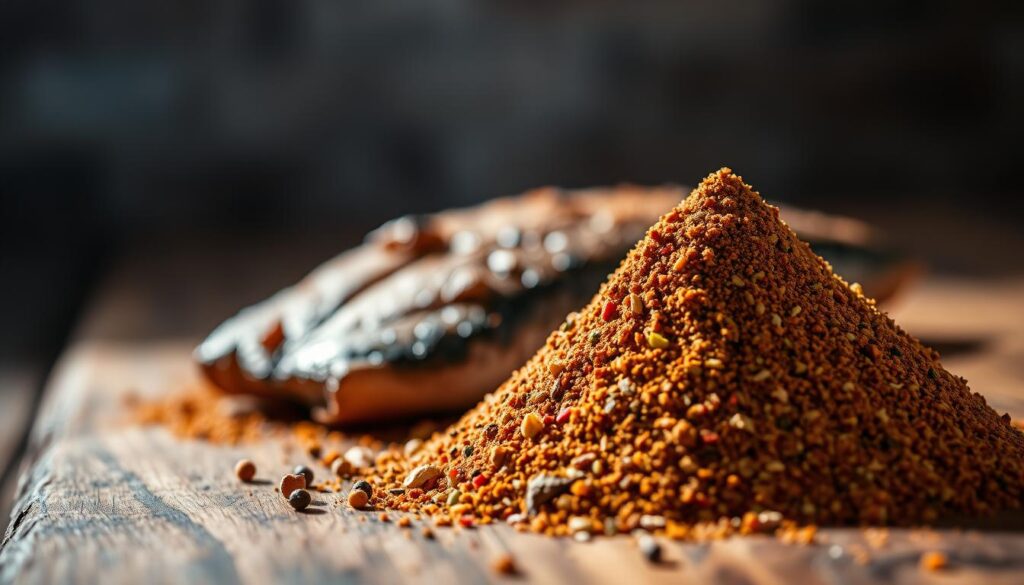
Best Fish Varieties for Blackening
Not all fish is good for blackening. Redfish, Red Snapper, and Catfish are top picks. They have a firm texture and mild taste, perfect for the bold flavors of blackening seasoning.
Grouper and Sea Bass are also great choices. They offer a unique taste. The important thing is to pick a fish that’s moist but firm for the best blackened crust.
Specialized Fish Seasoning Recipe
While you can buy blackened seasoning, making your own blackened fish seasoning recipe lets you tailor it to your liking. A basic mix includes paprika, garlic powder, onion powder, cayenne pepper, thyme, oregano, salt, and black pepper.
To whip up this blackened fish seasoning, combine 2 tablespoons of paprika, 1 tablespoon of garlic powder, 1 tablespoon of onion powder, 1 teaspoon of cayenne pepper, 1 teaspoon of dried thyme, 1 teaspoon of dried oregano, and salt and pepper to taste. You can tweak the amounts to fit your taste, like adjusting the heat from the cayenne pepper.
Blackened Chicken Seasoning
Mastering the art of blackening chicken with the right seasoning is a skill. It’s not just a spice mix; it’s a way to bring out bold flavors in blackened dishes.
Choosing the right chicken cut is key for blackening. Some cuts work better than others.
Ideal Chicken Cuts for Blackening
For blackening, choose chicken cuts that stay juicy inside and get a nice crust outside. Boneless, skinless chicken breasts and thighs are top choices. Breasts are leaner, while thighs are juicier and more flavorful.
- Boneless, skinless chicken breasts: These are great for a leaner blackened chicken dish.
- Chicken thighs: Thighs are more forgiving and stay juicy, making them perfect for those new to blackening.
Perfect Chicken Seasoning Blend
A great blackened chicken seasoning blend enhances chicken’s natural taste without overpowering it. It usually includes paprika, garlic powder, onion powder, thyme, oregano, cayenne pepper, salt, and black pepper.
To make your own seasoning, mix these spices to your liking. Start with paprika, add garlic and onion powder, and adjust the heat with cayenne pepper.
- Mix 2 tablespoons of paprika with 1 tablespoon each of garlic powder and onion powder.
- Add 1 teaspoon each of thyme, oregano, and cayenne pepper.
- Season with salt and black pepper to taste.
By tweaking the mix and adding your favorite spices, you can craft a blackened chicken seasoning recipe that’s uniquely yours.
The Blackening Cooking Technique
The blackening cooking technique is more than a recipe. It’s a skill that brings depth and complexity to dishes. This method, from Cajun cuisine, coats a protein or vegetable with spices and sears it in a hot skillet.
Traditional Cast Iron Method
The traditional cast iron method is key to blackening. It uses a cast iron skillet heated to a very high temperature. The skillet’s ability to hold heat is essential for success.
Temperature Control
Temperature control is vital in blackening. The skillet needs to be almost smoking hot, between 450°F to 500°F. This high heat is needed for the signature crust.
Ventilation Considerations
High temperatures mean ventilation is important. Cooking in a well-ventilated area or under a range hood helps manage smoke.
Modern Cooking Adaptations
While traditional cast iron is the best, modern adaptations make blackening easier. Some use non-stick skillets or grills for similar results with less smoke.
| Cooking Method | Equipment Needed | Advantages |
|---|---|---|
| Traditional Cast Iron | Cast Iron Skillet | Authentic flavor, excellent crust formation |
| Modern Non-Stick | Non-Stick Skillet | Easier cleanup, less smoke |
| Grilling | Grill | Smoky flavor, outdoor cooking option |
Blackened Seasoning for Other Proteins
Blackened seasoning is not just for fish and chicken. It can also make other proteins taste amazing. This spice blend is a must-have in every kitchen.
Beef and Pork Applications
Beef and pork love the bold taste of blackened seasoning. On steaks or roasts, it creates a tasty crust that matches the meat’s softness. The National Cattlemen’s Beef Association says seasoning boosts beef’s flavor.
For pork, mix the spices with its natural sweetness. Chef John Folse says getting the spice-protein balance right is key.
Adjust the seasoning amount based on the meat’s size and cut. Thicker pieces need more seasoning to soak in the flavor.
Seafood Beyond Fish
Shrimp, scallops, and squid also enjoy blackened seasoning. Just be careful not to mask their delicate taste. A light sprinkle of seasoning adds depth without overpowering.
“Blackening is not just about the spice; it’s about the technique and the quality of the ingredients,”
notes ChefPaul Prudhomme, who started the blackening trend.
Think about how you cook seafood with blackened seasoning. Grilling or searing makes the crust better. Baking gives a softer flavor.
Vegetarian Uses for Blackened Seasoning
Vegetarians can add depth and complexity to their dishes with blackened seasoning. This spice blend makes ordinary vegetarian meals into something special.
Blackened seasoning does more than add heat. It layers flavors that bring out the best in ingredients. It’s great for cooking tofu, tempeh, or vegetables.
Plant-Based Proteins
Plant-based proteins like tofu, tempeh, and seitan benefit from blackened seasoning. It gives them a crispy, flavorful outside that matches their natural texture.
- Tofu: Marinate and then sear tofu with blackened seasoning for a protein-packed meal.
- Tempeh: Use blackened seasoning to add a nutty, slightly smoky flavor to tempeh.
- Seitan: Enhance the texture and flavor of seitan by incorporating blackened seasoning into your recipe.
Vegetables and Meat Alternatives
Vegetables and meat alternatives can also be elevated with blackened seasoning. From portobello mushrooms to eggplant, the options are endless. The trick is to balance the seasoning’s bold flavors with the vegetables’ natural sweetness.
- Portobello Mushrooms: Blackened seasoning pairs well with the earthy flavor of portobello mushrooms.
- Eggplant: Use blackened seasoning to add a smoky depth to eggplant dishes.
- Vegetarian Burgers: Enhance the flavor of vegetarian burgers with a sprinkle of blackened seasoning.
Adding blackened seasoning to vegetarian cooking opens up new flavors and textures. It makes meals exciting and satisfying.
Cajun Blackened Seasoning vs. Regular Varieties
Cajun and regular blackened seasonings may look similar at first. But they have big differences in ingredients and taste. Knowing these differences helps cooks pick the right seasoning for their dishes.
Key Differences in Ingredients
Cajun blackened seasoning has a special mix of spices from Louisiana. It includes paprika, garlic powder, onion powder, cayenne pepper, thyme, and oregano. Regular blackened seasoning, on the other hand, has a more basic mix. It might have some of the same spices but lacks the Cajun or Creole touch.
Looking at the ingredients shows what makes each seasoning unique:
| Ingredient | Cajun Blackened Seasoning | Regular Blackened Seasoning |
|---|---|---|
| Paprika | Yes | Yes |
| Cayenne Pepper | Yes | Variable |
| Garlic Powder | Yes | Yes |
| Onion Powder | Yes | Yes |
| Thyme | Yes | No |
| Oregano | Yes | No |
Flavor Profile Comparison
The tastes of Cajun and regular blackened seasonings are quite different. Cajun seasoning has a bold, spicy flavor with a smoky hint. This comes from cayenne pepper and paprika. Regular seasoning is milder and lacks the depth of Cajun seasoning.
“The bold, spicy kick of Cajun blackened seasoning elevates dishes beyond the ordinary, making it a favorite among those who enjoy a little heat in their meals.”
In summary, both Cajun and regular blackened seasonings can make dishes taste better. But, the choice depends on how spicy you like it and the flavor you want. Cajun seasoning gives a strong, authentic Louisiana taste. Regular seasoning is more generic and milder.
Health Benefits of Blackened Seasoning
Blackened seasoning is not just tasty; it’s also good for you. This mix of spices not only makes food taste better but also adds nutritional value.
Nutritional Value of Key Spices
Blackened seasoning has many spices, each with its own health benefits. Paprika is full of antioxidants. Cayenne pepper helps boost your metabolism. Garlic powder and onion powder add vitamins and minerals.
Here’s a table showing the health benefits of these spices:
| Spice | Nutritional Benefit |
|---|---|
| Paprika | Rich in antioxidants, vitamin E |
| Cayenne Pepper | Boosts metabolism, anti-inflammatory |
| Garlic Powder | Rich in vitamins C and B6, minerals |
| Onion Powder | Good source of fiber, vitamins, and minerals |
Potential Health Advantages
The spices in blackened seasoning have many health benefits. Antioxidants help fight oxidative stress. Anti-inflammatory properties can manage inflammation. Some spices even help with weight management.
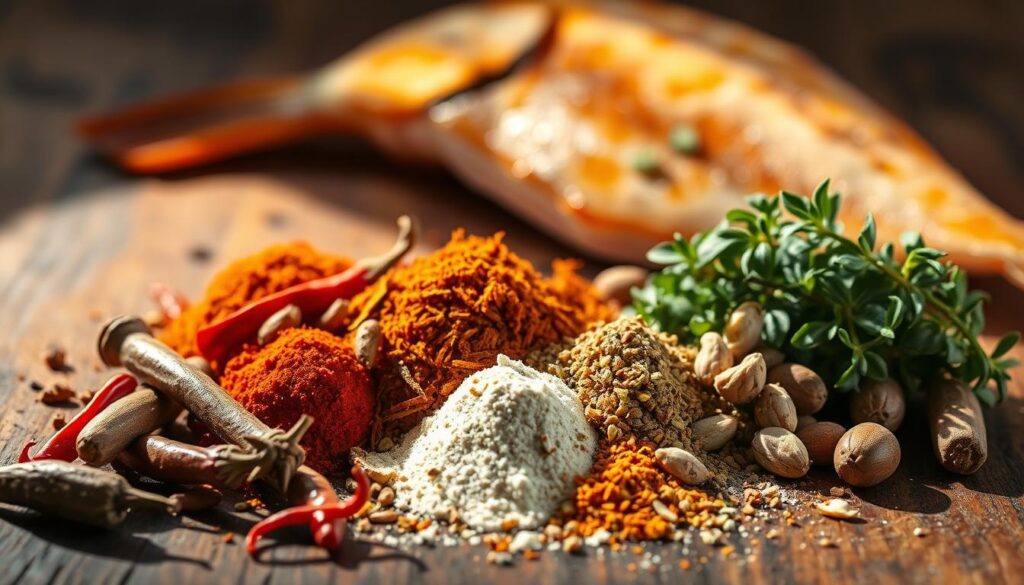
Adding blackened seasoning to your meals can improve flavor and health. It’s a great choice for a healthy diet.
Store-Bought vs. Homemade Blackened Seasoning
Blackened seasoning is a key ingredient in many recipes. You can buy it pre-mixed or make it yourself. The choice depends on what you like, how often you cook, and if you want to customize it.
If you like the ease of use, store-bought seasoning is a good option. Popular commercial brands like Tony’s Creole Seasoning and Blackened Redfish Magic by Paul Prudhomme have great flavors.
Popular Commercial Brands
Many well-known brands sell store-bought blackened seasoning. Here are a few:
- Tony’s Creole Seasoning
- Paul Prudhomme’s Blackened Redfish Magic
- Zatarain’s Blackened Seasoning
| Brand | Key Ingredients | Heat Level |
|---|---|---|
| Tony’s Creole Seasoning | Paprika, Garlic, Onion | Mild |
| Paul Prudhomme’s Blackened Redfish Magic | Paprika, Cayenne, Thyme | Medium |
| Zatarain’s Blackened Seasoning | Garlic, Onion, Paprika | Mild |
Benefits of DIY Blends
Making your own blackened seasoning has many benefits. You can control the flavor and heat, avoid preservatives, and save money if you cook a lot.
When you make your own blend, you can change the ingredients to fit your taste. For example, add more cayenne for spice or less for a milder taste.
Common Mistakes When Using Blackened Seasoning
Blackened seasoning can make your meals amazing, but there are mistakes to watch out for. It’s a strong spice mix that can turn simple dishes into culinary wonders. But, it needs careful use to get the right taste.
Cooking Errors to Avoid
One big mistake is using the wrong cooking methods. Overcooking or undercooking can mess up the taste and texture. Make sure your pan is hot before cooking.
Not using enough heat can stop the crust from forming. But, too much heat can burn the seasoning before the inside is cooked. It’s all about finding the right heat.
“The key to blackening is not just the seasoning, but the technique. It’s about creating a crust that enhances the natural flavors of the ingredient.”
Flavor Balance Issues
Another mistake is not balancing the flavors. Blackened seasoning is strong, so use it sparingly. Also, think about how the other ingredients will mix with it.
| Common Issues | Solutions |
|---|---|
| Overpowering flavor | Reduce the amount of blackened seasoning used |
| Insufficient crust formation | Increase cooking heat or adjust cooking time |
| Burnt seasoning | Lower the heat or adjust the cooking technique |
By knowing these common mistakes and avoiding them, you can make the most of blackened seasoning. Your dishes will be full of flavor and unforgettable.
Conclusion
Blackened seasoning has become a key ingredient in many recipes. It brings a unique taste to dishes, making it a favorite among chefs and home cooks. This spice blend is perfect for adding depth to food.
It started in Cajun cooking and has grown in popularity. Chefs use it to make blackened fish, chicken, and more. It also enhances the taste of vegetables, adding a rich flavor.
Anyone can make blackened seasoning at home. You can adjust the heat to your liking. It’s easy to use and makes any dish better, making it a must-have in kitchens.
In short, blackened seasoning is a valuable tool in cooking. It can change the flavor of many dishes. Its versatility and ease of use make it a top choice for cooks today.
FAQ
What is blackened seasoning?
Blackened seasoning is a spice mix used to flavor dishes, mainly in Cajun and Creole cooking. It’s made from spices, herbs, and other ingredients. This gives food a unique taste and smell.
What are the essential ingredients in blackened seasoning?
Key ingredients in blackened seasoning are paprika, cayenne pepper, and garlic powder. Onion powder, thyme, oregano, salt, and black pepper are also important. Some recipes might add cumin, coriander, or chili powder too.
How do I make blackened seasoning at home?
To make blackened seasoning at home, mix spices, herbs, and other ingredients in a bowl. Stir well and keep it in an airtight container to keep it fresh.
Can I adjust the heat level of blackened seasoning?
Yes, you can change the heat level by adjusting the amount of spicy ingredients. This lets you make the seasoning as hot or mild as you like.
What types of dishes can I use blackened seasoning on?
You can use blackened seasoning on fish, chicken, beef, pork, and veggies. It’s great for blackening cooking, creating a flavorful crust on food.
Is blackened seasoning the same as Cajun seasoning?
Blackened seasoning and Cajun seasoning are similar but not the same. Blackened seasoning is for blackening cooking, while Cajun seasoning is a general spice blend for Cajun dishes.
Can I use blackened seasoning on vegetarian dishes?
Yes, blackened seasoning can add flavor to vegetarian dishes. This includes plant-based proteins, veggies, and meat alternatives.
How do I store homemade blackened seasoning?
Store homemade blackened seasoning in an airtight container, like a glass jar with a tight lid. This keeps it fresh and flavorful.
What are some common mistakes to avoid when using blackened seasoning?
Avoid using too much or too little seasoning. Also, don’t forget to adjust the heat to your taste. And always store it properly.
Can I make blackened seasoning without paprika?
You can make blackened seasoning without paprika, but it changes the flavor and color. Paprika adds a unique taste and color to the blend.

